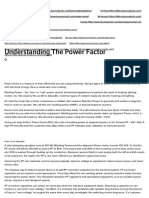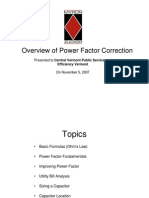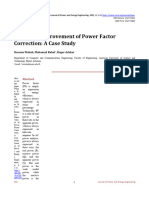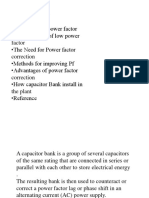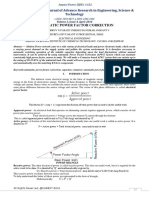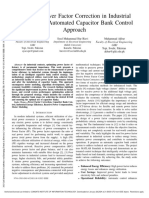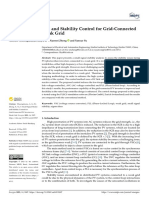0% found this document useful (0 votes)
42 views14 pagesPower Factor Correction (PFC) - 1
The document explains the concept of power factor (P.F) as a measure of electrical power efficiency in AC circuits, detailing real power, apparent power, and reactive power. It highlights the importance of maintaining a high power factor for reducing energy losses, improving voltage regulation, and extending equipment life, along with methods for power factor correction (PFC) using passive and active solutions. Additionally, it provides guidance on determining the appropriate size of capacitor banks for PFC and considerations for implementation.
Uploaded by
Abhi JCopyright
© © All Rights Reserved
We take content rights seriously. If you suspect this is your content, claim it here.
Available Formats
Download as PDF, TXT or read online on Scribd
0% found this document useful (0 votes)
42 views14 pagesPower Factor Correction (PFC) - 1
The document explains the concept of power factor (P.F) as a measure of electrical power efficiency in AC circuits, detailing real power, apparent power, and reactive power. It highlights the importance of maintaining a high power factor for reducing energy losses, improving voltage regulation, and extending equipment life, along with methods for power factor correction (PFC) using passive and active solutions. Additionally, it provides guidance on determining the appropriate size of capacitor banks for PFC and considerations for implementation.
Uploaded by
Abhi JCopyright
© © All Rights Reserved
We take content rights seriously. If you suspect this is your content, claim it here.
Available Formats
Download as PDF, TXT or read online on Scribd
/ 14











